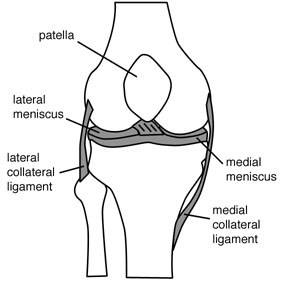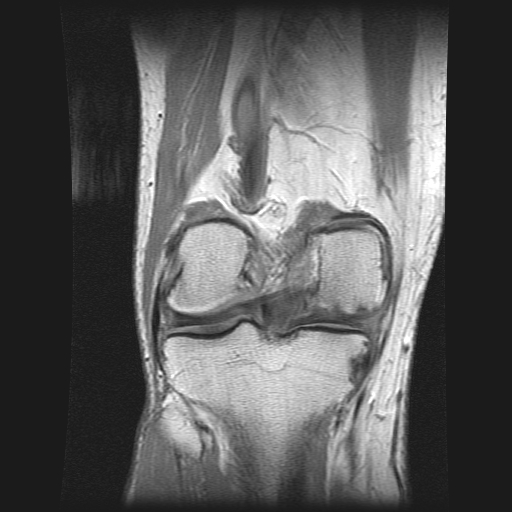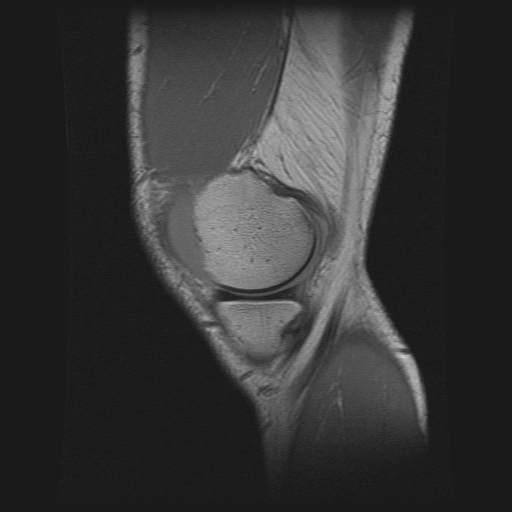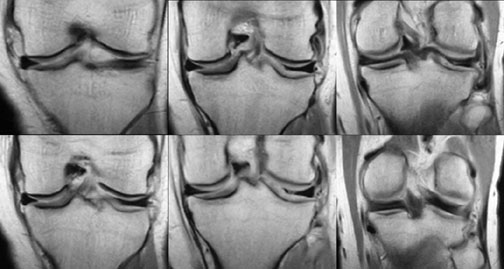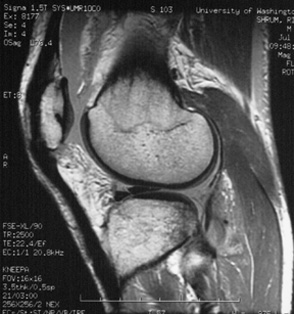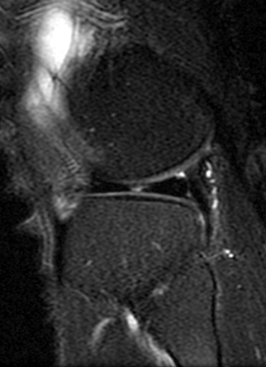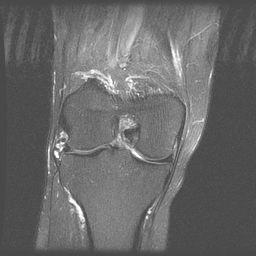| UW MSK Resident Projects |
|
|
|
|
Lateral meniscal pathologyPrint-friendly version of this pagePosted by amayao@u.washington.edu, 6/1/04 at 9:33:25 AM.
Spectrum of Lateral Meniscal Pathology Anatomy The knee has two menisci, the medial and the lateral menisci. They are C-shaped, fibrocartilaginous structures that are thick peripherally and thin centrally. They function to increase the articular surface of the tibia, to deepen the flat tibial plateaus, in order to accomodate the relatively round femoral condyles. The menisci function as shock absorbers and as passive stabilizers for the knee. They are firmly attached to the tibia at their anterior and posterior portions.
major internal structures of the right knee In the lateral meniscus, additional meniscofemoral ligaments can variably be found, extending from the posterior horn of the lateral meniscus to the medial femoral condyle. If, on sagittal images, the ligament is anterior to the PCL, then it is the ligament of Humphrey; if it is posterior to the PCL, it is the ligament of Wrisberg.
Ligament of Wrisberg on coronal images The lateral meniscus is attached to the joint capsule less intimately than the medial meniscus. This increased mobility results in less injury to the lateral meniscus. The anterior and posterior horns of the lateral meniscus are equal in size. Clinical Symptoms of lateral meniscal tear include intermittent pain due to synovitis, locking, catching and clicking. Although a lateral meniscal tear can be related to trauma, significant trauma is not necessary. A sudden twist can cause a tear. On exam, lateral joint line tenderness, effusion or limited range of motion can be found. Provocative maneuvers can often reproduce the click or the pain of the tear. Imaging MR is the imaging study of choice to evaluate the menisci. The normal meniscus is devoid of signal on all imaging sequences. Proton density or T1 weighted coronal and sagittal images are the most accurate for evaluation of the menisci.
Normal lateral meniscus, without any abnormal signal The lateral meniscus tears less commonly than the medial meniscus. A discoid lateral meniscus, which is thought to be a congenital variant, occurs much more commonly on the lateral meniscus. A discoid meniscus can be symptomatic, in and of itself, causing joint locking and joint line tenderness. The abnormal biomechanics of the discoid meniscus also makes it prone to tearing. It is diagnosed on sagittal images, when 3 or more consecutive segments including the body are identified. On coronal images, it is diagnosed when the horizontal measurement between the free margin and the periphery of the body is more than 1.4 cm.
Discoid lateral meniscus A tear is diagnosed when there is increased signal within the meniscus that extends to the articular surface. If there is increased signal within the meniscus that almost extends to the articular surface, but not quite, this is intrasubstance degeneration. 3 types of tears include: 1) Horizontal/oblique tear-- most common type
Horizontal tear in a discoid lateral meniscus 2) Vertical longitudinal tear-- this tear can also become a bucket handle tear if the medial fragment displaces. The fragment can displace into the intercondylar notch or flip anteriorly.
Bucket handle tear with an anteriorly flipped fragment 3) Radial tear-- this tear extends from the periphery to the free edge of the meniscus.
Radial tear of the lateral meniscus Parameniscal cysts are occasionally found and are highly associated with meniscal tears. They are more common in the lateral meniscus.
Parameniscal cyst with adjacent oblique tear
References: 1. Kaplan, et. al. Musculoskeletal MRI. WB Saunders, 2001. 2. Weissleder, et. al. Primer of Diagnostic Imaging. Mosby, 2003. 3. Manaster, et. al. The Requisites Musculoskeletal Imaging. Mosby, 2002. |
|
